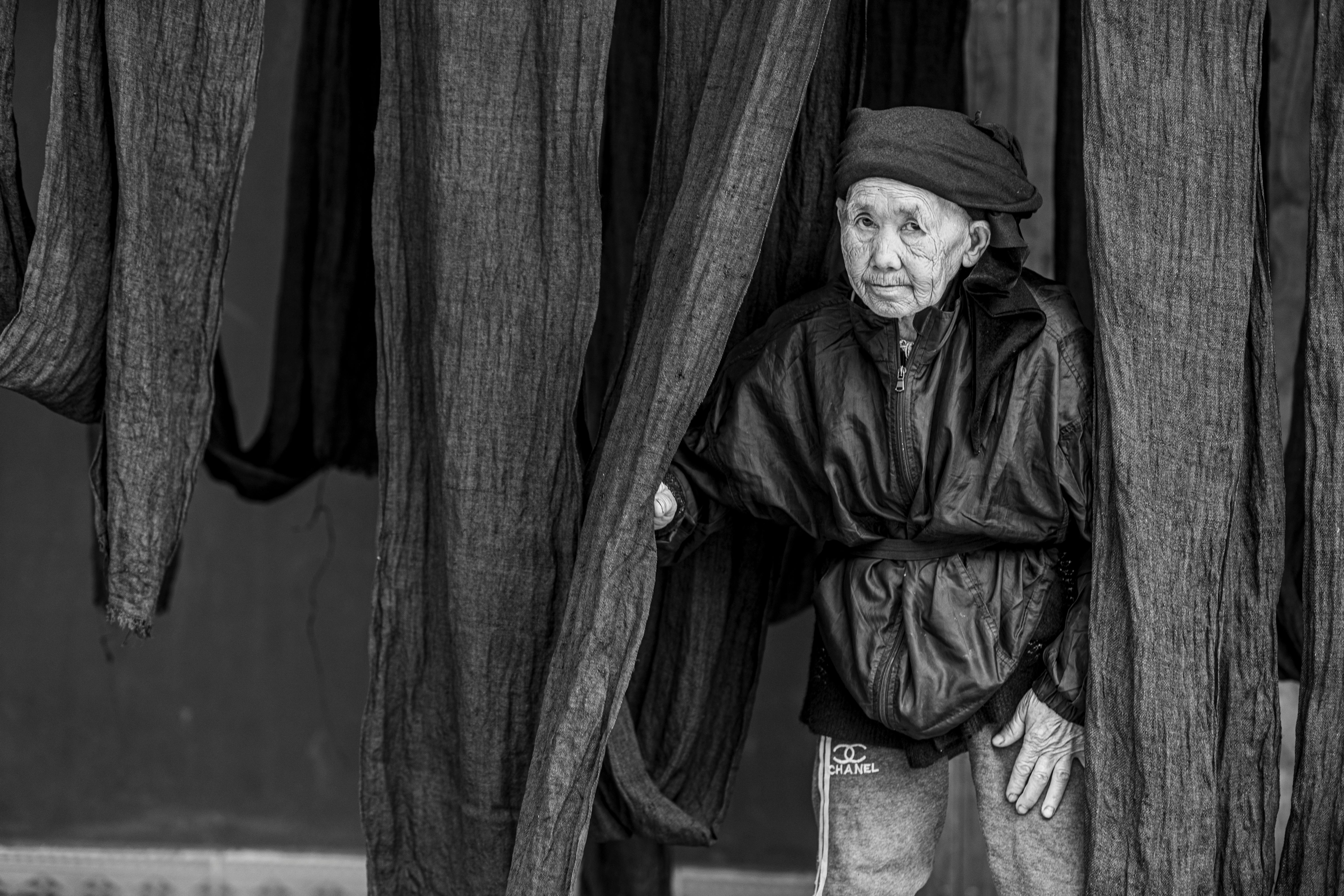The Boar Corps Project Part 2: Safeguarding Wildlife Health & Ecosystems
In an era where ecological balance is more fragile than ever, the concept of a dedicated "Boar Corps Project Part 2" emerges not as a military endeavor, but as a critical, multi-faceted initiative aimed at understanding, managing, and protecting wild boar populations. This ongoing project represents a significant leap forward in wildlife epidemiology and conservation, particularly in the face of widespread diseases like African Swine Fever (ASF). Far from a simple observation, it embodies a proactive, science-driven approach to ensure the health of these resilient animals and, by extension, the broader ecosystems they inhabit.
The initial phases of such a monumental undertaking laid the groundwork for data collection and preliminary analysis. Now, "Boar Corps Project Part 2" delves deeper, focusing on advanced research, collaborative strategies, and community engagement to tackle complex challenges. This article explores the vital aspects of this second phase, highlighting its importance for environmental stewardship and public health, drawing on established scientific principles and the urgent need for informed action in wildlife management.
Table of Contents
- Understanding the "Boar Corps Project": A New Era in Wildlife Management
- The Shadow of African Swine Fever: Why a "Boar Corps" is Crucial
- Strategic Pillars of "Boar Corps Project Part 2"
- Technological Advancements in Boar Management
- Ethical Considerations and Sustainable Practices
- Global Impact and Future Outlook of the "Boar Corps Project"
- Expert Insights and Field Reports
- Join the Effort: Supporting Wildlife Health Initiatives
Understanding the "Boar Corps Project": A New Era in Wildlife Management
The term "Boar Corps Project" might evoke images of organized military units, but in the context of modern wildlife management, it signifies a highly structured, interdisciplinary effort. This "corps" is composed of veterinarians, epidemiologists, ecologists, conservationists, data scientists, and local communities, all working in concert. Its primary objective is to develop and implement comprehensive strategies for monitoring, controlling, and mitigating the impact of diseases within wild boar populations, as well as managing their numbers where necessary to maintain ecological balance. The initial phase of this project likely focused on baseline data collection, mapping boar populations, and understanding their movement patterns. "Boar Corps Project Part 2" elevates these efforts, moving from foundational understanding to sophisticated intervention and long-term sustainability. It acknowledges the intricate relationship between wild animals, livestock, and human health, positioning itself as a critical defense line against zoonotic diseases and agricultural threats. This project is not just about boars; it's about the health of our planet.The Shadow of African Swine Fever: Why a "Boar Corps" is Crucial
One of the most pressing reasons for the existence and continued evolution of initiatives like the "Boar Corps Project Part 2" is the relentless threat posed by African Swine Fever (ASF). ASF is a highly contagious and often fatal viral disease affecting domestic and wild pigs. It does not pose a direct threat to human health, but its devastating impact on pig populations can lead to severe economic losses for farmers and significant disruptions to global food supply chains. Wild boar populations act as a crucial reservoir for the ASF virus, facilitating its spread across vast geographical areas, often unknowingly. The movement of infected wild boar can introduce the virus into previously unaffected regions, making their management and monitoring paramount.Epidemiology of ASF in Wild Boar Populations
Understanding the epidemiology of ASF in wild boar populations is the cornerstone of any effective control strategy. As detailed in scientific literature, such as the work by Vittorio Guberti and Sergei Khomenko on the epidemiology of African Swine Fever in wild boar populations living in Northern Europe, the disease's dynamics are complex. ASF spreads through direct contact between infected and susceptible animals, as well as indirectly through contaminated feed, equipment, or even vehicles. Wild boar, with their wide-ranging movements and social structures, can rapidly transmit the virus within their groups and to new areas. The challenge lies in the difficulty of monitoring and intervening with wild populations, which often inhabit dense forests and remote landscapes. "Boar Corps Project Part 2" emphasizes advanced epidemiological modeling, genetic sequencing of the virus, and detailed spatial analysis to predict outbreaks and trace transmission routes. This involves not just tracking individual animals, but understanding population densities, habitat use, and inter-species interactions that might influence disease spread.The Role of Surveillance and Early Detection
Effective surveillance and early detection are vital for containing ASF outbreaks. This involves a multi-pronged approach:- Passive Surveillance: Encouraging hunters, forest rangers, and the public to report dead or sick wild boar. This is often the first indicator of ASF presence in an area.
- Active Surveillance: Systematic sampling of live wild boar (e.g., through trapping and testing) or samples from hunted animals.
- Biosecurity Measures: Educating and enforcing strict biosecurity protocols for hunters, farmers, and anyone coming into contact with wild boar or their habitats to prevent the spread of the virus to domestic pigs.
Strategic Pillars of "Boar Corps Project Part 2"
The success of "Boar Corps Project Part 2" hinges on several key strategic pillars, each designed to address a specific facet of wild boar management and disease control.Collaborative Research and Data Sharing
No single entity can tackle the complexities of wildlife disease alone. "Boar Corps Project Part 2" places a strong emphasis on fostering international and inter-agency collaboration. This includes:- Joint Research Initiatives: Pooling resources and expertise for advanced studies on ASF epidemiology, vaccine development (though no effective ASF vaccine currently exists for commercial use), and population control methods.
- Data Sharing Platforms: Establishing secure, standardized platforms for sharing epidemiological data, research findings, and best practices among participating nations and organizations. This allows for real-time threat assessment and coordinated responses.
- Expert Exchange Programs: Facilitating the exchange of scientists, veterinarians, and field experts to share knowledge and build capacity in affected regions.
Community Engagement and Awareness
For any wildlife management project to be truly effective, it must have the support and active participation of local communities. "Boar Corps Project Part 2" recognizes this by prioritizing robust community engagement and public awareness campaigns. This involves:- Educational Workshops: Informing hunters, farmers, and rural residents about ASF, its risks, and how they can contribute to prevention and surveillance.
- Citizen Science Programs: Empowering local citizens to participate in data collection, such as reporting wild boar sightings or carcasses, through user-friendly mobile applications or dedicated hotlines.
- Stakeholder Dialogues: Regular meetings with agricultural bodies, hunting associations, environmental groups, and local authorities to ensure that management strategies are practical, socially acceptable, and address local concerns.
Technological Advancements in Boar Management
The evolution of technology plays a pivotal role in the enhanced capabilities of "Boar Corps Project Part 2." From advanced tracking systems to sophisticated data analytics, technology provides unprecedented tools for wildlife management:- GPS Tracking and Telemetry: Deploying GPS collars on a representative sample of wild boar provides invaluable data on their movement patterns, home ranges, and potential contact points with domestic pig farms or other wild populations. This helps in mapping disease spread.
- Remote Sensing and GIS: Satellite imagery and Geographic Information Systems (GIS) are used to map wild boar habitats, identify high-risk areas, and plan surveillance routes. This allows for efficient resource allocation.
- Drone Technology: Drones equipped with thermal cameras can be used for counting boar populations in dense vegetation, assessing carcass distribution, and monitoring biosecurity perimeters around affected areas.
- Artificial Intelligence and Machine Learning: AI algorithms can analyze vast datasets from surveillance efforts, environmental factors, and historical outbreaks to predict future disease hotspots and optimize intervention strategies.
- Mobile Applications: Development of user-friendly apps for field data collection, reporting of sightings or carcasses, and dissemination of real-time information to field teams and the public.
Ethical Considerations and Sustainable Practices
Any intervention in wildlife populations must be approached with profound ethical consideration and a commitment to sustainable practices. "Boar Corps Project Part 2" is guided by principles that prioritize animal welfare, ecological integrity, and long-term viability:- Humane Methods: All methods for capturing, sampling, or, if necessary, culling wild boar are designed to be as humane as possible, adhering to international best practices for animal welfare.
- Targeted Interventions: Rather than broad-brush approaches, the project focuses on targeted interventions based on scientific data, minimizing disruption to non-target species and the broader ecosystem.
- Ecological Impact Assessment: Before implementing any large-scale management strategy, thorough ecological impact assessments are conducted to ensure that interventions do not inadvertently harm other species or disrupt ecosystem services.
- Public Acceptance: Strategies are developed in consultation with stakeholders to ensure they are socially acceptable and do not lead to conflicts with local communities or conservation groups.
- Long-Term Sustainability: The project aims to build local capacity and establish sustainable management frameworks that can continue to operate effectively even after the initial project phases conclude.
Global Impact and Future Outlook of the "Boar Corps Project"
The implications of a successful "Boar Corps Project Part 2" extend far beyond regional boundaries. By effectively managing wild boar populations and containing diseases like ASF, the project contributes significantly to:- Food Security: Protecting domestic pig industries from devastating outbreaks ensures a stable supply of pork, a crucial protein source for millions worldwide.
- Economic Stability: Preventing economic losses for farmers, preventing trade restrictions, and safeguarding rural livelihoods.
- Biodiversity Conservation: Maintaining healthy wild boar populations within ecological limits helps prevent overgrazing or habitat destruction, which could impact other species.
- Public Health Preparedness: The methodologies developed for ASF management can serve as a blueprint for responding to other emerging zoonotic diseases, strengthening global health security.
Expert Insights and Field Reports
The practical implementation of "Boar Corps Project Part 2" is meticulously documented through various channels, providing transparency and valuable lessons learned. Blog essays, field reports, and written and visual reflections by boar team members offer an invaluable window into the day-to-day operations and scientific discoveries. These reports often highlight:- Challenges Encountered: Real-world obstacles such as difficult terrain, adverse weather conditions, or unexpected animal behavior.
- Innovative Solutions: Creative approaches developed by field teams to overcome these challenges, often leading to new best practices.
- Data Validation: How theoretical models are tested and refined based on empirical data collected in the field.
- Human Stories: The dedication and expertise of the individuals working on the front lines of wildlife health.
Join the Effort: Supporting Wildlife Health Initiatives
The success of initiatives like the "Boar Corps Project Part 2" ultimately depends on collective action and sustained support. Whether you are a policymaker, a scientist, a farmer, a hunter, or simply a concerned citizen, there are ways to contribute to these vital efforts:- Stay Informed: Educate yourself about wildlife diseases and their impact on ecosystems and human societies.
- Report Observations: If you encounter sick or deceased wild animals, especially boar, report them to local wildlife authorities or veterinary services. Your vigilance can be crucial for early detection.
- Support Research: Advocate for and support funding for scientific research in wildlife epidemiology and conservation.
- Practice Biosecurity: If you are involved in farming or outdoor activities, follow strict biosecurity guidelines to prevent disease transmission between wild and domestic animals.
- Share Knowledge: Help raise awareness within your community about the importance of responsible wildlife management and disease prevention.
- What Is A Wardkeeper In Prison
- Alan Ruck Movies And Tv Shows
- Henning May Songs
- Mitchell Hope Sexuality
- Priya Amini

Art+Of+Zoo+Boar+Corps+Project+Free Photos, Download The BEST Free Art

Art+Of+Zoo+Boar+Corps+Project+Free Photos, Download The BEST Free Art

Art+Of+Zoo+Boar+Corps+Project+Free Photos, Download The BEST Free Art